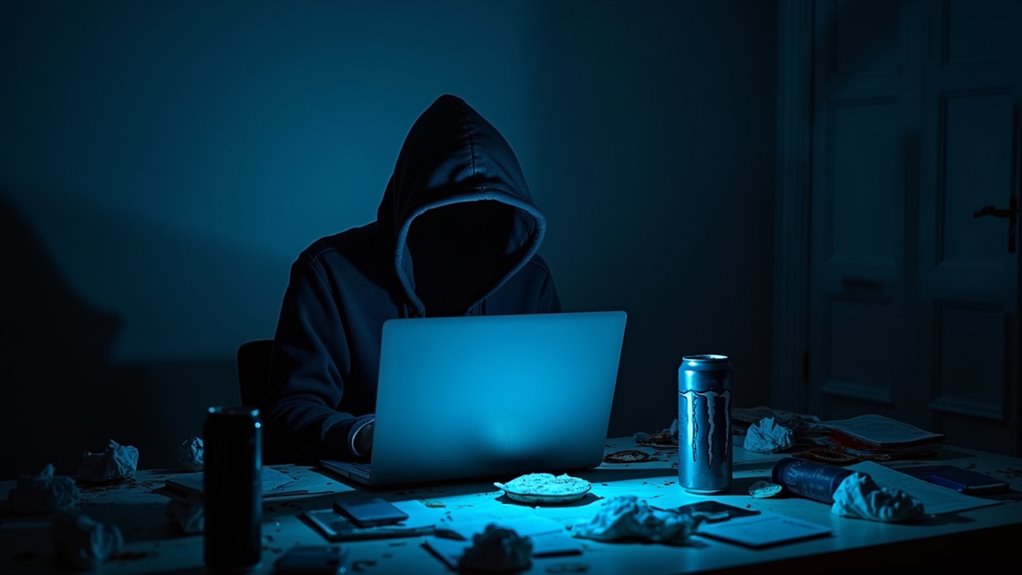What Commonly Motivates Cybercriminals To Attack Network
Cybercriminals are commonly motivated by financial gain, ideological agendas, the desire for power, or simply the intent to cause disruption and chaos. Psychological factors like frustration can also drive their actions. For a deeper understanding, further explanations and supporting details will be explored later in the article.
Essential Facts in 30 Seconds
Key Takeaways on Motivations of Cybercriminals Attacking Networks
- Financial gain drives cybercriminals to target networks for profit via ransomware and fraud.
- Ideological beliefs motivate hacktivists to attack networks that oppose their views.
- Psychological factors, such as anger or impulsivity, lead individuals to commit cybercrimes.
- Desire for power and control pushes hackers to target large systems.
- Goals of disruption and sabotage result in chaos through DDoS attacks on networks.
Financial Incentives Driving Cybercrime
Dive into the world of cybercrime and see the truth. Money drives most digital attacks today. Experts predict global costs will hit $10.5 trillion by 2025. That huge number shows why criminals join this game. The profits are just too tempting.
Look closer at their tricks for making cash. Cybercriminals attack weak banks and big companies. They use smart tools like AI to plan scams. These aren’t basic thefts—think fake emails or deepfake videos. Such tricks fool people and steal billions.
In 2023, fraud cost the world $485.6 billion. Asia-Pacific alone lost $190.2 billion. The numbers scream a scary reality.
Tech grows, and so do these attacks. Criminals keep chasing more money. Their methods get sharper every day. You see this impact everywhere around the globe. Ransomware, a key method, is projected to attack businesses every 11 seconds by 2021.
Stay aware—money fuels this dangerous world.
Ideological and Political Agendas

Cybercrime often ties to money, but some attackers chase bigger ideas. They use tech as a tool for their beliefs. Think of groups like Anonymous or NoName057(16). They target those against their views on religion or politics. Money isn’t their goal. They fight for a cause. Often, they shout their message to start public talks.
Picture a government site hit by hacktivists. Groups like GlorySec might crash it with DDoS attacks. They flood the site to stop it from working. Or they splash protest messages on it. Their aim is clear. They want change or media focus on social problems. For instance, some groups align with geopolitical conflicts to push their agenda, like targeting entities based on nationalistic motives geopolitical conflicts.
These acts are like digital spray paint. They mess up work and push for better security. Their tricks, like stealing data or using malware, spark debates. Still, they show how strong digital protest can be.
Psychological Factors Behind Attacks

Cybercrime isn’t just about money or power. Deep inside, emotions play a big role. Think about anger or frustration—ever felt that? Such feelings can push someone to attack online. Stress from life, like money problems, messes with clear thinking. People then make bad choices on the internet. Additionally, many cybercriminals experience a sense of invincibility due to their online anonymity, which emboldens them to commit crimes without fear of being caught.
Our minds trick us with wrong ideas too. Some cybercriminals feel too sure of themselves. They think no one will catch them. Big mistake! Check the table below for key reasons behind their actions. Trust me, inner struggles can lead anyone to risky online behavior. Don’t ignore these hidden triggers. They often start the trouble.
| Psychological Factor | Impact on Cybercrime |
|---|---|
| Emotional Triggers | Push people to attack for revenge or relief |
| Cognitive Biases | Twist how they see danger, raise overconfidence |
| Stress and Isolation | Make them join bad online groups for support |
| Impulsivity | Causes quick, thoughtless actions online |
| Frustration | Drives them to pick specific targets |
Power and Control as Motivating Forces

Cybercriminals often seek more than just money. Many crave power and control in the digital world. They love showing off their skills.
Think about outsmarting big systems! They target huge networks like government or corporate ones. This proves their talent to everyone.
Picture a hacker wanting fame. They get a thrill from controlling systems. They might take over data or resources. Some even change results to gain respect online.
The internet hides their identity. This makes them bold to act. State actors or thrill-seekers, both want dominance. Power drives them, not just cash.
Stay aware of these hidden dangers online!
Disruption and Sabotage Objectives

Cybercriminals often aim to create chaos with disruption and sabotage. They want to hurt systems for power or money. Some use Distributed Denial of Service (DDoS) attacks. These flood networks with traffic to stop services. Others use ransomware to lock files. This stops work until you pay money. Such attacks waste your time and cash.
Sabotage can cause even bigger harm. Think of state actors or angry workers. They exploit weak software to delete data. They might crash your network too. Their aim is to ruin trust. They want outages or political control. The damage includes money loss and chaos.
Strong defenses are a must to fight this. Recovery takes huge effort and resources. Stay alert—risks are massive.
Frequently Asked Questions
How Do Cybercriminals Choose Their Targets?
Cybercriminals pick their targets by spotting easy weaknesses to exploit. They hunt for valuable data or simple ways to break in. Think about it—why target a tough system? They always aim for the weakest link. Studies show 90% of attacks hit poorly protected systems. That’s a huge number! Stay alert and guard your info. Their strategy is smart and sneaky every time. Keep your defenses strong to stay safe.
What Tools Do Cybercriminals Commonly Use?
Dive into the sneaky world of cybercriminals and their tools. They often use malware like viruses and ransomware. These nasty programs can lock your files or steal data. Phishing emails trick you with fake messages to grab personal info. Studies show over 90% of attacks start with phishing. Stay sharp and learn these tricks to protect yourself. Knowledge is your best shield against these online dangers!
How Can Organizations Recover After Attacks?
Act quickly after a cyberattack to protect your organization. Isolate the threats right away. Restore systems as fast as you can. Focus on data recovery with safe backups. Test your plans often to stay ready. Strong preparation saves time and money. Did you know? Over 60% of businesses fail after major attacks. Stay one step ahead with solid plans. Keep your team trained for emergencies. Recovery becomes easier with clear steps.
What Legal Consequences Do Cybercriminals Face?
Cybercriminals face serious legal trouble if they get caught. Jail time can range from 10 to 20 years. Laws hit hard with no mercy. Fines can drain your pockets fast. Some even lose everything they own. Think twice before breaking digital rules. Cybercrime isn’t a game to play. Protect yourself and stay on the right path. Data shows thousands get arrested each year. Don’t risk your freedom for quick gains.
How Do Cybercriminals Evade Detection?
Cybercriminals are super sneaky and hard to catch. They use tricks like social engineering to fool people. Their malware hides well, making attacks tough to notice. Stats show over 60% of hacks go unseen for months. Stay alert and watch for odd emails or messages. These crooks often pretend to be someone you trust. Keep your software updated to block their sneaky moves. Always double-check before clicking any weird links. Protect yourself by learning their dirty tricks. Stay safe out there with simple steps!
Conclusion
Cybercriminals attack networks for many reasons. Money often drives them—ransomware brings huge profits. Some steal data to sell on dark markets. Others push political ideas through hacking. Power excites certain attackers. Many enjoy causing chaos with denial-of-service strikes. These attacks overload servers and stop services. A few even hack for fun or thrills. Data shows over 60% of breaches target cash. Small businesses face risks too—nearly 43% get hit yearly. Stay alert to these threats. Protect your online space with strong passwords. Awareness stops their dangerous games. Knowledge keeps you safe every day.

Ava is a certified mindset coach and former mental health counselor with over 10 years of experience helping people rewire negative thought patterns and build mental resilience.
Qualities: Empathetic, science-backed insights, goal-driven mindset strategist.
